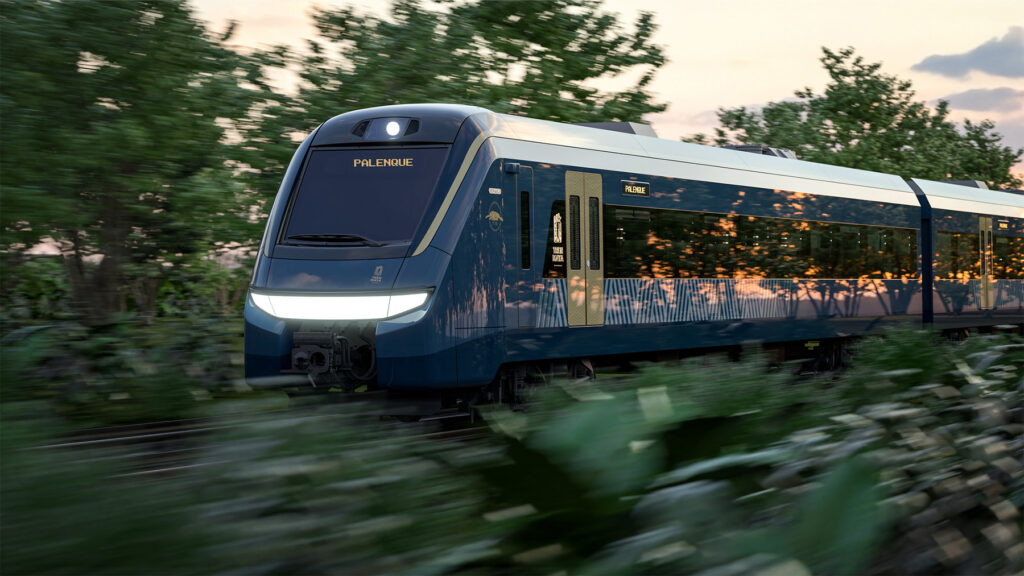The long-awaited Maya Train has been a hot topic for some time now, and with fresh news coming from the Ministry of Environment and Natural Resources, María Luisa Albores González last Monday announced that section 5 of the train could be one of the most scenic and iconic train routes in Mexico.
For The Architecture And History Lovers
Travelers and culture seekers can soon delight in the train’s exciting new offerings, as it comes as a surprise that the southern part of the section 5 route, which is roughly 67km long, from Playa Del Carmen to Tulum, will feature four new archeological sites in the Quintana Roo state; Cueva Garra del Jaguar, Cueva 8 balas, Pamul II, and Cueva de las Manitas.
This also includes the restoration and improvement of two already existing archeological zones, Muyhil and Tulum. In conjunction with these works, a new visitor service center will be opening in Tulum, and Muyil will receive a ticket office and services area too.
This section comprises two stations, Playa Del Carmen and Tulum – the project will see the construction of 3 viaducts on the railway structure, and a 266-liner meter cable bridge, built to free a cavern that is located on the route.
For The Nature Lovers
The press conference announced that this stunning route will also feature two protected natural areas. On one side, there will be Tulum’s National Park, which houses unique eco-systems, and beaches that are a spawning site for sea turtles, not to mention it’s known for its lush views, coastal landscape, and its renowned Mayan ruins. Then, on the other side, there will be ‘Jaguar National Park’, which will protect the flora and fauna of up to around 2,250 hectares of land.
With all this in mind, the General Director of the National Institute of Anthropology and History, Diego Prieto Hernández, has stated the ‘Paamul II Eco-Archaeological corridor’ will be created, built up of the Manitas Cave, Ocho Balas, and the Jaguar Claw Cave.
More than 60% of the actual route will be an elevated viaduct, which is very unique, providing travelers with breathtaking views and, as a byproduct, the viaducts will protect the surrounding cenotes, caverns, and rivers in the area – more than 50 contemporary works will be implemented, such as wildlife crossings, vehicular crossings, and an electric tractor substation.
These changes are all in place so that the Mayan Train can have a sustainable mode of transport for passengers while simultaneously controlling the urban growth in the state. Mara Lezama also announced that the project will include the construction of the eagerly anticipated Tulum Airport and over one billion pesos of investment for archaeological rescue.
The Lesser Known Destinations Of Quintana Roo
It is stated by the Governor of Quintana Roo, María Elena “Mara” Lezama Espinosa, that tourists generally flock to the more densely populated areas of Quintana Roo, such as Cancun, and usually distributed to other popular areas of the Riviera Maya.
However, it seems only a small portion of visitors get to witness other places of notoriety in the state, to which the Maya Train will now open up the entire state and all its offerings to the world, such as – the Riviera Del Rio Hondo, on the route of the churches, that house historical and cultural archeological treasures, where the smaller and more rural indigenous towns are. She said, “few know where the cave of snake pendants is in José Maria Morelos or the wonderful embroideries that our artisans make in Xpujil, or in many other areas in the state – the Maya train will help re-discover these communities and the wonders they create.
Soon, not only Mexico, but the world, will be able to enjoy this magnificent feat of engineering and eco-conscious, culturally enriching, and scenic train route, interconnecting many of Mexico’s most sought-after nature reserves and tourist hotspots while preserving Mayan culture.
Source: CancunSun
Thanks
C.P. Karina Sayed
